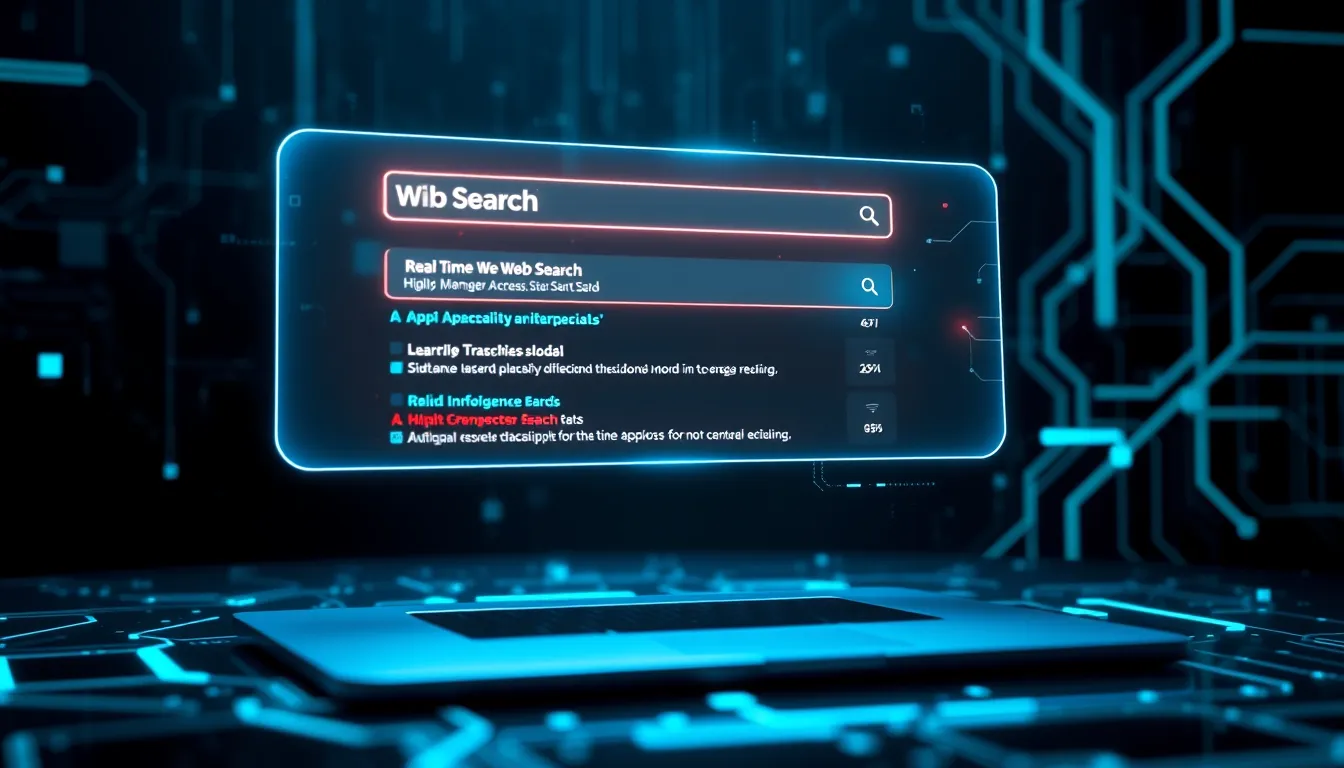Now Reading: Transformative Apple AI Strategy: Elevate Siri & Vision Pro
-
01
Transformative Apple AI Strategy: Elevate Siri & Vision Pro
Transformative Apple AI Strategy: Elevate Siri & Vision Pro

Transformative Apple AI Strategy: Elevate Siri & Vision Pro
Apple’s evolving approach towards Artificial Intelligence is reshaping the technological landscape and redefining how users interact with their devices. At the forefront of this transformation is an innovative Apple AI strategy that integrates cutting-edge machine learning, natural language processing, and immersive hardware solutions. This strategic realignment not only reinforces Apple’s commitment to excellence but also paves the way for a future where AI-driven innovation becomes integral to everyday digital experiences.
Leadership Reshuffle and Strategic Impact
In a bold executive maneuver, Apple has recently restructured its leadership team, a move that signals a monumental shift in its strategic direction. One of the most notable decisions was assigning the leader behind the groundbreaking Vision Pro headset to also oversee Siri, Apple’s flagship digital assistant. This change is more than a mere reshuffling of roles—it represents a unified vision in which hardware, software, and AI are intertwined to deliver a seamless user experience.
John Giannandrea, a veteran in the field of AI with a deep background in machine learning and natural language processing, continues to drive advancements in Apple’s broader AI initiatives. His presence ensures that the company remains at the cutting edge of technological innovation, combining deep technical expertise with a clear vision for the future. Under his direction, the Apple AI strategy is no longer seen as a series of isolated projects, but as a comprehensive approach that impacts every aspect of Apple’s product ecosystem.
By centralizing AI leadership within the company, Apple is effectively breaking down traditional silos, allowing for greater collaboration between teams working on hardware design, software development, and AI research. This integration is crucial, especially as the lines between these domains continue to blur in an era where intelligent devices must both interpret complex data and react in real time.
The strategic leadership reshuffle has far-reaching implications. It not only reinforces Apple’s commitment to harnessing artificial intelligence across its products but also sets a high standard for innovation in the tech industry. The interplay between seasoned executives and forward-thinking managers under this revised leadership structure is expected to drive the company towards unprecedented advancements and ensure that its products remain at the forefront of technology.
Enhanced Siri Integration and Machine Learning Advancements
Siri, one of the most recognizable virtual assistants in the marketplace, is undergoing a significant transformation. Apple is leveraging state-of-the-art machine learning techniques and deep neural networks to enhance Siri’s capabilities, making the assistant more intuitive, responsive, and contextually aware. This improved integration across devices is designed to better serve users by anticipating their needs, learning from their behavior, and delivering personalized responses.
At the core of these improvements is a renewed focus on refining AI algorithms that power Siri’s natural language processing and decision-making processes. Apple is analyzing vast amounts of user interaction data and feedback to continuously improve these algorithms. This ensures that Siri becomes more than a simple voice-activated tool—it evolves into a smart, adaptive system capable of understanding nuances in human speech and responding in a manner that feels genuinely natural.
Key advancements in Siri integration include:
- Enhanced algorithmic intelligence: Through iterative learning and robust data processing, Siri’s response generation has become more accurate and contextually appropriate.
- Seamless hardware-software synergy: Cutting-edge hardware innovations in devices, particularly the Vision Pro headset, allow for faster data processing and more immersive user experiences.
- Future-ready machine learning enhancements: Apple is continuously investing in research and development to ensure its AI infrastructure remains agile and capable of incorporating emerging machine learning models and techniques.
These enhancements point to a future where digital assistants like Siri are not just reactive tools but proactive partners. By leveraging deep learning and contextual analysis, Siri is poised to become significantly more interactive and personalized, adapting to each user’s unique preferences and habits. This evolution aligns with the broader trend of integrating AI throughout digital ecosystems, ensuring that user interaction is both intuitive and secure.
Vision Pro Headset: A Revolution in Immersive Innovation
The Vision Pro headset stands as a landmark innovation within Apple’s portfolio, embodying the convergence of hardware design excellence and an innovative Apple AI strategy. As a device, it transcends traditional boundaries of display technology by incorporating advanced visual processing, interactive design, and AI-driven enhancements. The Vision Pro headset is not merely hardware; it is an experiential platform designed to transform how users perceive and interact with digital content.
In the realm of visual computing, the Vision Pro headset incorporates sophisticated sensors and algorithms that dynamically adjust visual output based on environmental factors and user interactions. This dynamic adjustment is powered by machine learning models that analyze real-time data, ensuring optimal performance regardless of varying conditions. Whether for professional applications such as virtual meetings and visual design, or for immersive entertainment experiences, this headset represents the next step in how humans will interface with digital media.
Moreover, the headset’s integration with Siri enhances its utility. Users can execute voice commands seamlessly while engaging in augmented or virtual reality environments, blurring the lines between physical and digital worlds. This level of integration also sets the stage for future applications in various fields, including education, healthcare, and creative industries. The symbiotic relationship between hardware and advanced software creates experiences that are both intuitive and deeply responsive to user needs.
The Vision Pro headset, with its array of smart features, also provides insights into Apple’s broader AI initiatives. By serving as a platform that accelerates the adoption of new AI-driven functionalities, it offers a glimpse into the future of personal and professional digital interactions. The headset is a visible manifestation of Apple’s commitment to pushing the boundaries of what is possible when artificial intelligence is seamlessly integrated with top-tier hardware performance.
Enabling Next-Generation User Experiences
Beyond its high-profile consumer products, Apple’s renewed focus on an integrated AI strategy has broader implications for the technology ecosystem. As AI becomes an ever more critical component in creating responsive, adaptive, and user-centric interfaces, Apple is positioning itself at the forefront of this paradigm shift.
Central to this vision is the notion that technology should anticipate user needs before they even articulate them. By centralizing AI research and cross-functional collaboration, Apple is driving innovations that promise to redefine user engagement. Imagine a future where your digital assistant not only manages your schedule but also learns your preferences to proactively suggest actions tailored to your lifestyle. This is the essence of the transformative Apple AI strategy: ensuring that technology evolves not just in terms of capability, but also in understanding and empathizing with its users.
For the tech community, such a strategy underscores the necessity of integrating robust AI frameworks into every facet of product development. It is no longer sufficient to rely on reactive algorithms for routine tasks; instead, products must leverage predictive analytics and deep learning to enhance all forms of digital interactions. Apple’s approach serves as an industry blueprint, emphasizing the value of embedding AI at the core of design thinking. This methodology not only improves functionality but also reinforces user trust through enhanced reliability and performance.
The Broader Impact on the Future of AI
Apple’s strategic pivot toward a more integrated AI approach resonates far beyond its product lineup—it signals a broader industry trend towards smarter, more connected technologies. As organizations across different sectors begin to adopt similar strategies, the cumulative effect is poised to usher in a new era of technological convergence.
Several key trends highlight this shift:
- Cross-Platform Integration: Apple’s seamless integration of machine learning across devices serves as a model for multi-platform AI adoption. The focus on unifying disparate systems into a single, cohesive framework represents a crucial step in the future of intelligent devices.
- Enhanced Data Security: With increased reliance on machine learning comes the responsibility of managing vast amounts of user data securely. Apple’s commitment to privacy and data security remains a cornerstone of its strategy, ensuring that even as AI capabilities expand, user data remains protected through industry-leading encryption and security protocols.
- Personalized User Experiences: The move towards using AI to create highly personalized user interfaces is a trend that is gaining traction across the tech sector. With capabilities like predictive behavior analysis and context-aware computing, the future of technology will likely feature devices that adapt dynamically to individual user needs.
- Democratization of AI: By making advanced AI tools accessible not only to developers but also to end-users, Apple is championing the democratization of AI technology. This means that innovations in AI will benefit a wider range of users, removing barriers to entry, and fostering an ecosystem where creativity and technical innovation go hand in hand.
Future Prospects and Industry Implications
Looking ahead, the transformative Apple AI strategy is expected to fuel further innovations that extend well beyond conventional consumer electronics. The gradual but definitive convergence of AI with traditional computing environments will likely result in groundbreaking applications in industries such as healthcare, education, automotive, and entertainment.
For instance, in healthcare, similar AI methodologies could lead to more accurate diagnostic tools that integrate visual data processing and predictive analytics. In the automotive sector, the lessons learned from enhancing Siri and the Vision Pro headset might be applied to the development of more responsive and contextually aware in-car systems. Each of these applications underscores the pervasive influence of Apple’s AI strategy on the future of technology.
Moreover, such strategic innovation sets a competitive standard within the tech industry. As other companies respond by elevating their AI strategies, the overall quality and performance of digital products are bound to improve, leading to accelerated technological progress on a global scale.
Conclusion: A Vision for the Future
Apple’s decisive strategic initiatives—from high-level leadership reshuffles to technological innovations in Siri integration and Vision Pro’s immersive design—illustrate the company’s unwavering commitment to an advanced Apple AI strategy. This approach is redefining the contours of digital interaction by ensuring that every facet of the user experience is enhanced by smart, adaptive, and secure AI implementations.
The comprehensive integration of AI into Apple’s products and services signifies not only a renewed focus on immediate product improvements but also a long-term vision for the future of digital technology. By investing heavily in machine learning research, fostering cross-disciplinary collaboration, and maintaining a staunch commitment to user privacy and data security, Apple continues to set new benchmarks. These developments highlight the growing importance of AI across the technology sector and reaffirm Apple’s position as a trailblazer in the field.
In a world where technology evolves at breakneck speed, Apple’s transformative AI strategy serves as a beacon for innovation, guiding the industry toward a future where digital experiences are more intuitive, immersive, and intimately connected to the needs of each user. The integrated approach seen in the evolution of Siri and the Vision Pro headset is a testament to how thoughtful leadership, continuous innovation, and a commitment to excellence can redefine the boundaries of what is possible. As we look forward to the next chapters in this technological revolution, it is clear that the future will be shaped by strategies that prioritize seamless integration, intelligent design, and, above all, user empowerment.
Apple’s renewed focus on its AI roadmap presents a compelling vision for the future. It blends state-of-the-art technology with innovative leadership practices, ensuring that the company not only keeps pace with the rapid developments in artificial intelligence but also sets a precedent for how this technology can be used responsibly and effectively. As we continue to witness how emerging technologies redefine our relationship with the digital world, the enhanced Siri integration and groundbreaking features in the Vision Pro headset epitomize what is possible when innovation, leadership, and AI converge.
Through this comprehensive strategic overhaul, Apple is not just improving products; it is revolutionizing the way society interacts with technology. The transformative Apple AI strategy unlocks new opportunities for enriched digital ecosystems, thereby establishing a legacy of innovation that will influence generations to come.

























